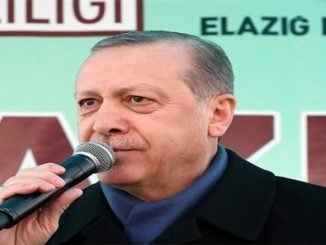
Turkey’s state-run news agency says 137 migrants have been stopped trying to cross from Turkey’s Aegean coastline to the Greek islands, where thousands are stuck after the colsure of Balkan route earlier this year.
Anadolu said Sunday that 95 migrants from Syria, Afghanistan and Iraq had tried to reach Lesbos and Chios aboard three boats.
The remaining 42 migrants, including women and children, were picked up trying to make it to Kos.
Turkish coast guard statistics show 1,603 migrants attempted to reach the Greek islands in August, nearly twice as many as in July.
The EU’s border agency Frontex said this week the number of migrants arriving in the Greek islands has increased significantly over the last month.
The number of refugees and migrants fleeing Turkey to Greece has risen slightly in recent weeks, but humanitarian groups familiar with the situation say it is premature to call it a return to the days of last summer, when thousands made the crossing every day.
Frontex said it was the “first noticeable monthly increase” since the EU-Turkey migrant deal came into effect.
According to data from UNHCR, the first week of September saw 1,052 refugees and migrants crossing into Greece, nearly double the number the week before. The month of August saw a total of 3,437 arrivals in Greece, the highest number since April, when 3,650 arrived.
Reports suggest the bump in figures might signal the revival of the Eastern Mediterranean route, which saw close to a million land in Greece in 2015, and the imminent collapse of a deal between Turkey and the E.U. to stem the flow of the displaced.
But Lucy Carrigan, a regional officer for Greece with the International Refugee Council, told TIME it is “hard” to know if the increase is part of a larger trend, as the movement of people has been difficult to predict since the closure of borders on the Balkan route and the E.U.-Turkey deal. “While yes, there has been an increase … the numbers are relatively speaking quite small,” says Carrigan, who works on the Greek island of Lesbos. This time last year, 5,000 people were making the crossing every day.
The bigger immediate issue, she and others say, is that accommodation centers on Greek islands, such as Lesbos and Kos, are filled to overcapacity as the arrivals are not being relocated to Europe or returned to Turkey fast enough.
According to the International Organization for Migration, the maximum capacity on the Aegean islands’ reception centers is at 6,850 but as of Sept. 6 the total presence of migrants on the islands is at 12,515. A source from an aid agency working in Greece told TIME that asylum processing centers run by the E.U. are woefully understaffed. After claimants preregister for asylum— which could take up to five months— migrants find themselves waiting a further six months for their initial asylum appointments.
The EU-Turkey deal is certainly facing hurdles following the failed coup in Turkey. It has successfully slowed the flow; since the deal formally came into effect in March, the numbers of migrants leaving Turkey’s shores for Greece dropped from around 27,000 arrivals in March, to a monthly average of around 2,000 between April and July. But sources in Greece say authorities there have struggled to return recent migrant arrivals to Turkey—under the terms of the deal— as Turkish officials in charge of returns were recalled following the coup attempt.
Many of the some 60,000 migrants and refugees are now left in limbo in Greece, where even finding work in a country struggling with an unemployment rate of around 35% is a challenge. With very few able to leave and more arrivals trickling in, Carrigan says the situation will only become “more and more and more of an issue.”



